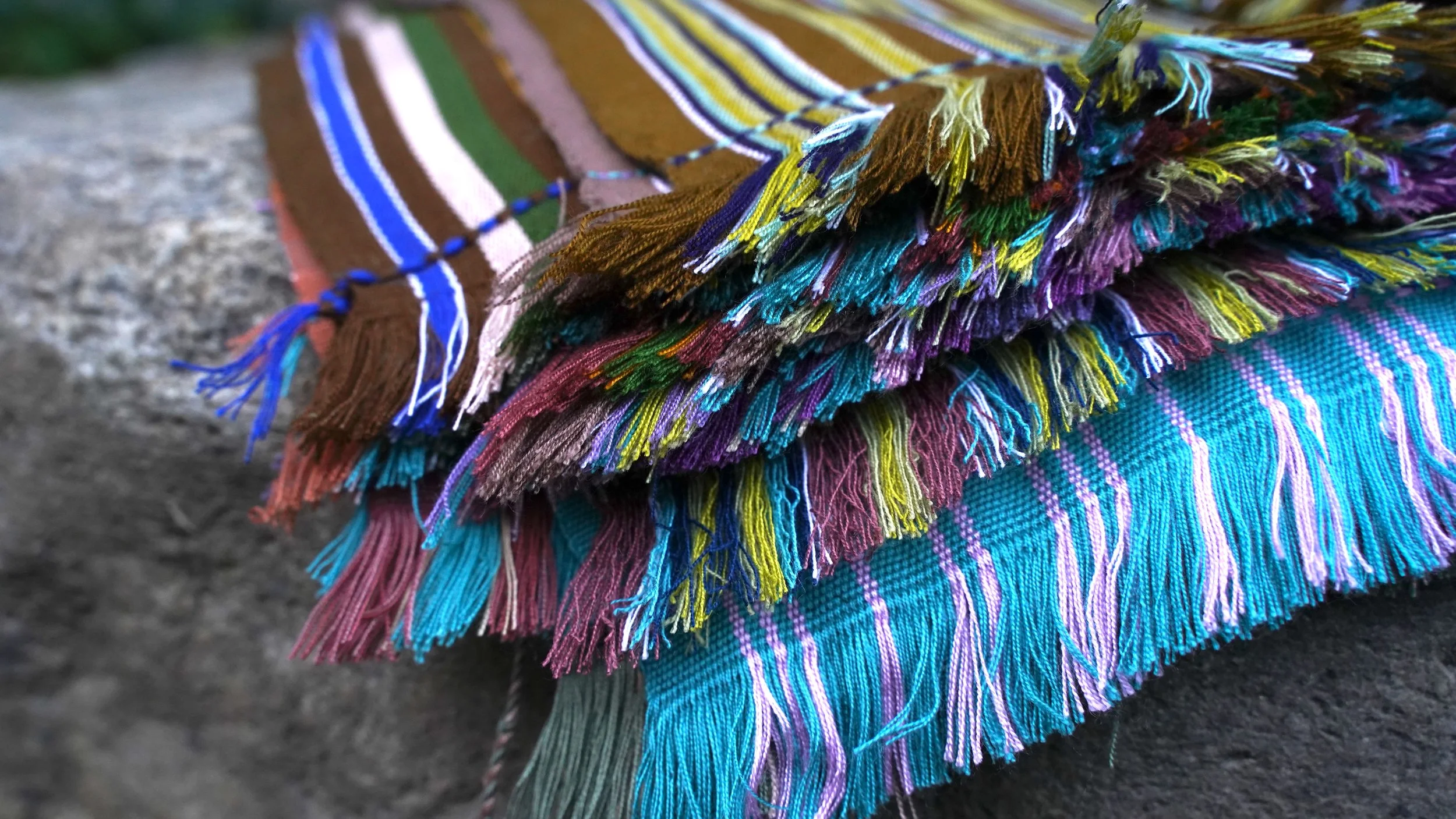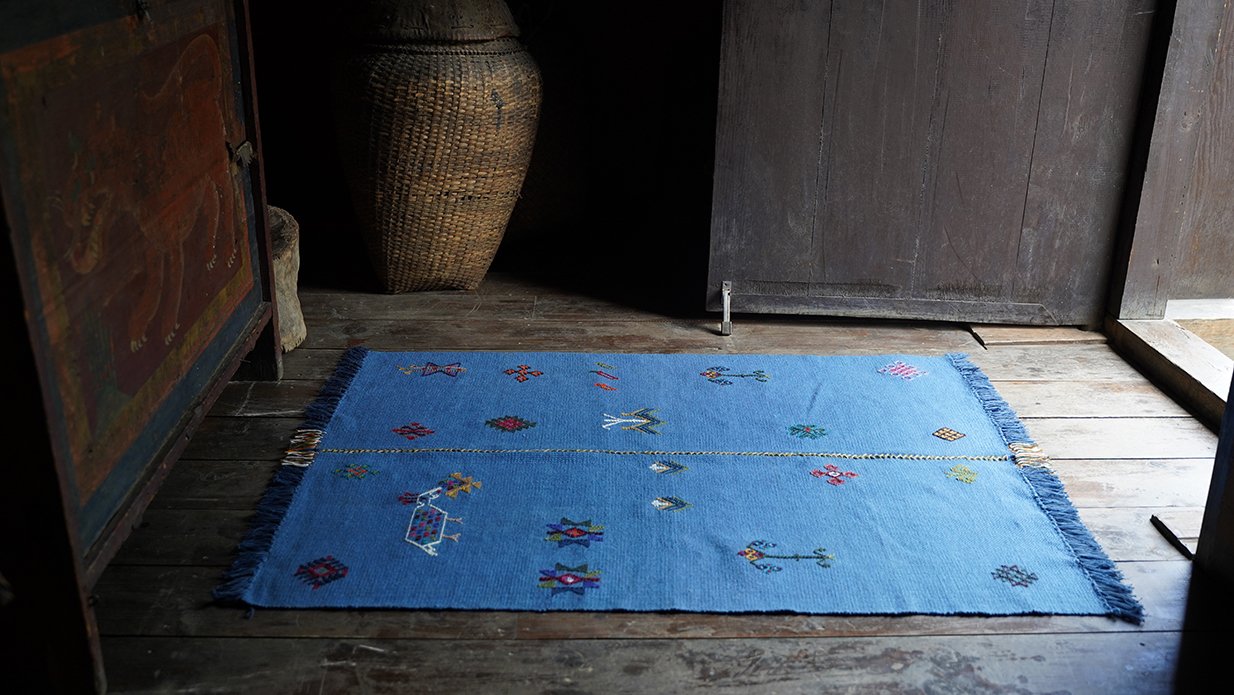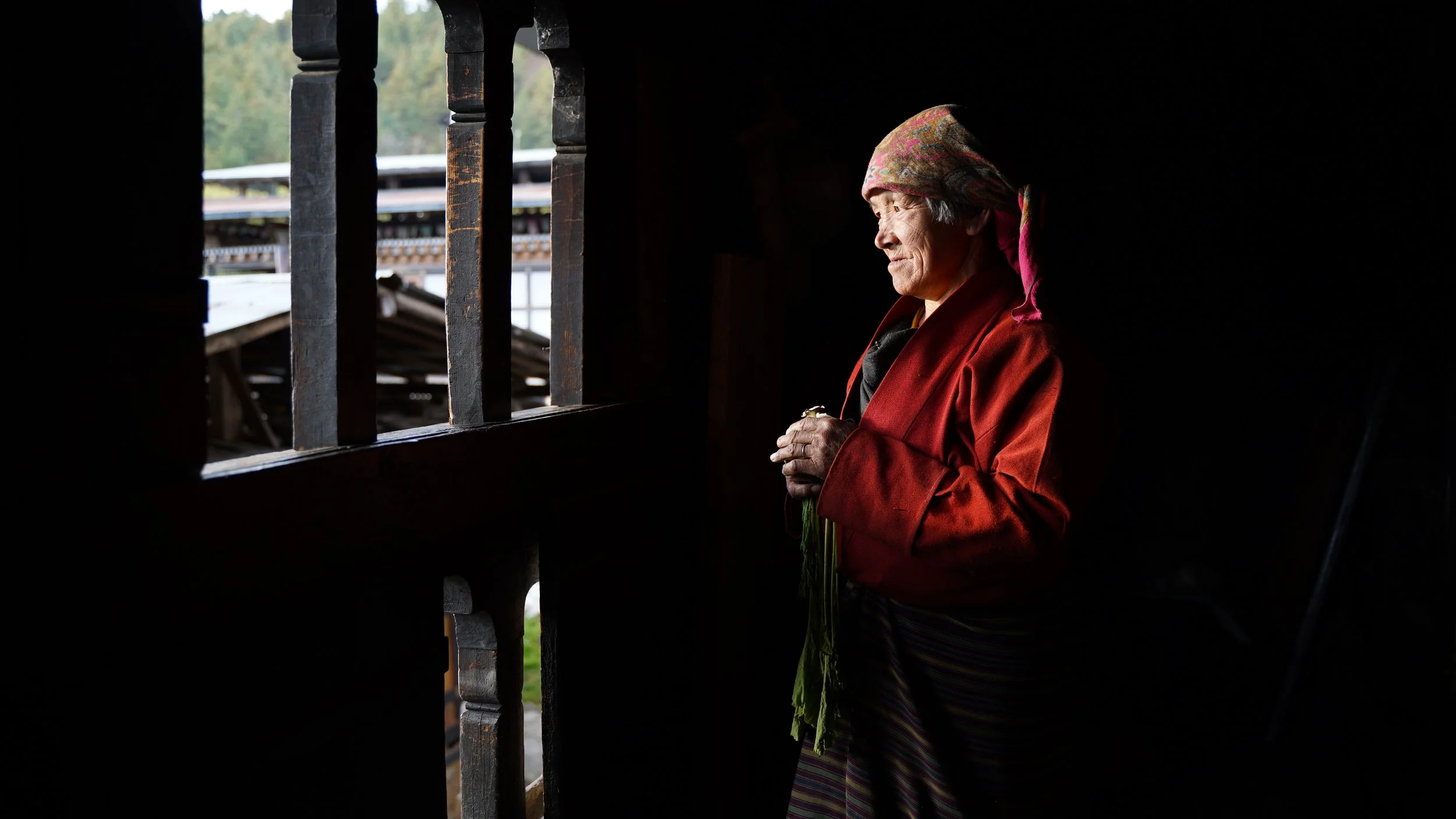
HAPPINESS IS HERE
November 9th - December 25th, 2021
THE GALLERY is pleased to present an exhibition, HAPPINESS IS HERE featuring Bhutanese hand loomed Textile collection implemented by ITC (International Trade Centre) with EU and the Royal Government of Bhutan. Located in the high reaches of the Himalayas, Bhutan is a precious stone set in a beautiful well- protected nature with a rich and unique culture. What strikes the visitor arriving in Bhutan are the intensity of the light, so warm and enveloping, the purity of its air and translucent rivers. Bhutanese are deeply rooted in their land and traditions, yet open to modernity. This is a rare opportunity to showcase variety of Bhutanese textile culture in the US market. A main portion of the sales will go support to Bhutanese artisans who’re mostly female.
THE GALLERY’s owner chef, Hiroki Odo is creating special food and drink menu inspired from Bhutanese culture. Hand carved wood furniture by Takuji Matsuda will be exhibited with the textile collection.
Textile in Bhutan is an important pillar of its culture. Weaving is passed on from one generation to another, from mother to daughter. The Bhutanese lifestyle is organized around numerous religious festivals and events each with their specific outfits, so the textile sector relies on a very high level of weaving expertise. It traditionally weaves either for the Royal Family or for own use. The project promotes the work of textiles companies, designers and civil society organizations within Bhutan, representing more than 200 weavers.
Culinary
THE GALLERY’s owner chef, Hiroki Odo and the team created special food and drink menu inspired from Bhutanese culture.
ABOUT BHUTAN
Bhutan is a very small country in the Himalayas between the Tibet Autonomous Region of China and India with an area of 14,824 square miles (38,394 square kilometers) is slightly larger than the U.S. state of Maryland. Bhutan’s projected population is about 780,000 people—or about 10% more than the city of Seattle in Washington State.
Besides the stunning natural scenery, the enduring image of the country for most visitors is the strong sense of culture and tradition that binds the kingdom and clearly distinguishes it from its larger neighbors. Bhutan is the only Vajrayana Buddhist nation in the world, and the profound teachings of this tradition remain well preserved and exert a strong influence in all aspects of life. Due to its pristine environment and harmonious society, the tiny Kingdom of Bhutan has been called "The Last Shangri-la”
And in an effort to promote its cultural heritage, since 1989, it has been made compulsory for Bhutanese to wear their traditional costumes in school, government offices, during festivals, and on important occasions. That tradition has been making Bhutanese textile culture more colorful and diverse until today.
What’s GNH?
The phrase ‘Gross National Happiness’ was first coined by the 4th King of Bhutan, King Jigme Singye Wangchuck, in 1972 when he declared, “Gross National Happiness is more important than Gross Domestic Product.” The concept implies that sustainable development should take a holistic approach towards notions of progress and give equal importance to non-economic aspects of wellbeing.
BHUTAN TEXTILES COLLECTION






Photos courtesy of Bhutan Textiles (Upasana Dahal, Gyeltshen Tobdhen, and project beneficiaries)
EU-Bhutan Trade Support Project is organized International Trade Center (ITC) in partnership with the Royal Government of Bhutan with the funding support of the European Union (EU).
Special Thanks to
Sylvie Betemps / Valerie Billot / Gabriela Byrde / Karma Choden / Pema Choden / Nadia Dafri / Upasana Dahal / Choeying Dema / Audrey Gavard-Lonchey / Takuji Matsuda / Velonique Rondeau / Udyog Subedi / Agency for Promotion of Indigenous Crafts (APIC) / Druksell / Europian Union (EU) / International Trade Centre (ITC) / The Royal Government of Bhutan
The Gallery Crew
Manabu Asanuma / Ricard Diaz / Victor Diaz / Shuji Furukawa / Karma Gurung / Fabian Morales / Federico Perez Mosso / Hiroki Odo / Yoko Odo / Brian Saito / Jordan Smith / Mari Yoh
Exhibition curated by Akiko Ichikawa






